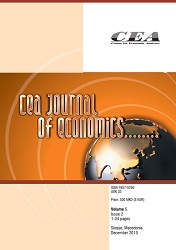MIGRATION AND ITS IMPACT ON THE DEMOGRAPHIC TRANSITION IN THE COUNTRIES OF THE EUROPEAN UNION
MIGRATION AND ITS IMPACT ON THE DEMOGRAPHIC TRANSITION IN THE COUNTRIES OF THE EUROPEAN UNION
Author(s): Marija Trpkova-Nestorovska, Borce Trenovski, Biljana TashevskaSubject(s): National Economy
Published by: Центарот за економски анализи (ЦЕА)
Keywords: electronic banking; profitability; electronic financial services
Summary/Abstract: Demographic transition is defined as shift from high birth and death rates and increasing population to very low birth and death rates and decreasing population, as a country progresses from a pre-industrial to an industrialized economic system and significant increase in the urbanization. It is consisted of five stages. The analysis provides revised information about the stages of demographic transition for each of the twenty eight EU countries, and also examines whether the transition model is still compatible with the current demographic situation. The countries are classified in five groups according to their demographic similarity. Panel regression models are used to test the statistical significance of the demographic trends from the demographic transition model. While confirming the demographic transition model or describing the variations from the theory, the analysis should give guidance for further population development and its implications on the economy and the society. Also, there is an insight given on the impact of the migration on demographic transition and European population, since immigrants tend to have a massive impact on population in Europe in the past decades. While some countries benefit from constant influx of immigrants, others face severe consequences in form of ageing population, fertility decline, weaker economy and labor shortage.
Journal: CEA Journal of Economics
- Issue Year: 13/2018
- Issue No: 2
- Page Range: 35-52
- Page Count: 18
- Language: English

